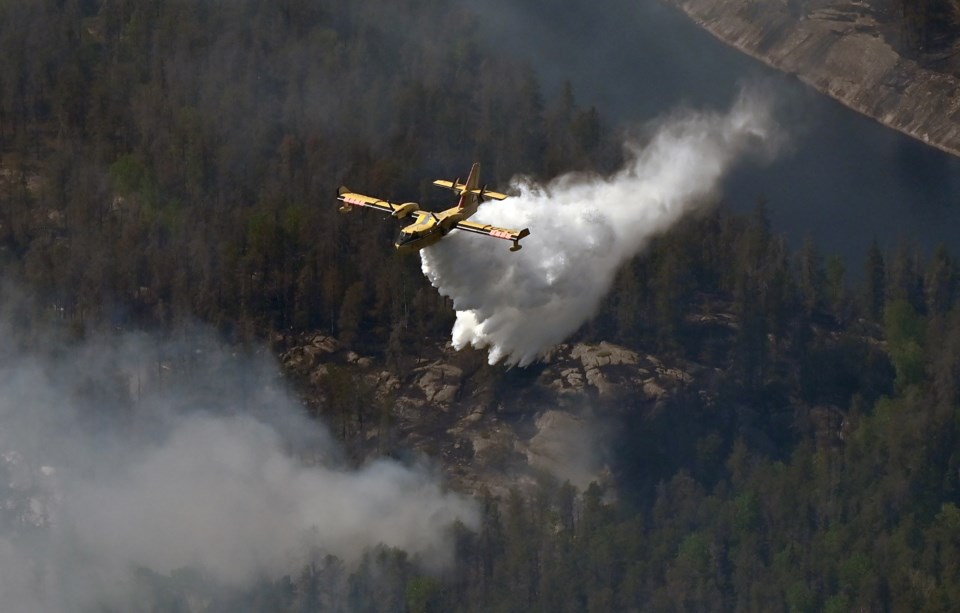NORTHWESTERN ONTARIO — Keep drones away from forest fires.
That’s according to aviation officials with the Ministry of Natural Resources’ Aviation, Forest Fire and Emergency Services.
While they weren’t able to provide specific numbers, ministry officials confirmed that there have been “several instances” both this season and in years dating back to 2020 where an unauthorized drone in the vicinity of a forest fire either delayed an air-based firefighting operation or suspended it.
“The challenge and difficulty with these types of incidents is that the pilots in our aircraft, who are there to do a very important job, are often unaware of the dangerous presence of drones in the area until video footage surfaces later on social media,” Chris Marchand, a communications and media relations specialist with the fire service wrote in an email, citing aviation subject matter experts.
“This is especially the case with the smaller microdrones.”
In other cases, drones are spotted by firefighters on the ground and the information relayed to air crews responsible for manage aerial firefighting efforts.
“Unless the drone operator can be located and the drone grounded immediately, the decision is made for firefighting aircraft to leave the area as it is no longer safe to operate,” Marchand’s email said.
Daily updates on the forest fire situation in Northwestern Ontario include warnings about drone activity, calling forest fires a "no-drone zone."
"Flying drones around forest fires is both dangerous and illegal. When you fly a drone near a forest fire, you can put the lives of pilots, firefighters and other emergency personnel at risk. Be safe, stay clear of forest fires," the bulletin reads.
Firefighting aircraft have to be especially careful because if one of them collides with a drone, it “can cause significant damage to the aircraft’s exterior,” Alison Bezubiak, a fire information officer with the MNR’s Aviation, Forest Fire and Emergency Services wrote in an email, also citing subject experts.
“They can also easily penetrate the outer metal skin, damaging internal components. Such damage may result in significant repair costs and can ground the aircraft, reducing the availability of firefighting aircraft during critical suppression operations.”
Drone contact with an aircraft’s wind screen, helicopter rotors or propellors, or if one gets sucked into the air intake of an engine “may be catastrophic for the flight crew and aircraft,” Bezubiak’s email said. “The severity of damage and hazard posed to aircraft and the people who fly them only increase with larger, heavier drones.”
A 56-year-old California man reportedly pleaded guilty to one count of unsafe operation of an unmanned aircraft in a Jan. 9 collision between a drone and a Quebec waterbomber who was involved with fighting the California wildfires, knocking the plane out of service for several days.
Aviation officials said during periods of increased fire activity, fires can grow from being manageable to out of control in minutes. Any delays in getting aircraft — whether they be waterbombers or ones carrying fire crews — where they need to be, “those critical early minutes are lost.”
“This can mean the difference between a successful and a failed initial attack — and ultimately, between a fire that can be suppressed and one that is beyond control measures,” Bezubiak’s email said, adding that waterbombers are crucial in the protection of buildings and other infrastructure as well as reducing fire intensity so firefighters can do their jobs.
All airspace within five nautical miles (just over nine kilometres) from a fire’s perimeter and up to 3,000 feet above ground level is restricted, the MNR said, citing federal aviation regulations and only firefighting aircraft may be in that space.
The ministry also advised if you see smoke or know of a forest fire in the area, assume aircraft will be there shortly.
